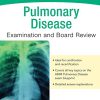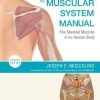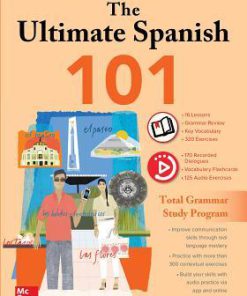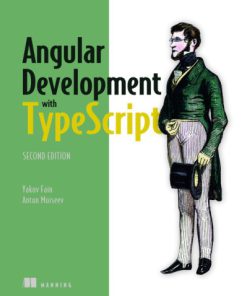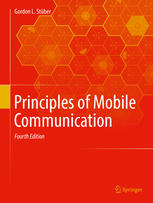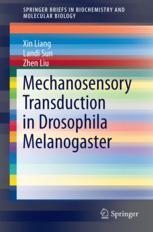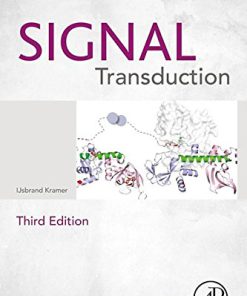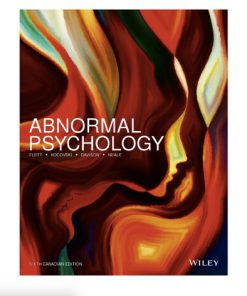Sensory Transduction 2nd Edition by Gordon Fain 0198835027 9780198835028
$50.00 Original price was: $50.00.$25.00Current price is: $25.00.
Sensory Transduction 2nd Edition by Gordon L. Fain – Ebook PDF Instant Download/DeliveryISBN: 0198835027, 9780198835028
Full download Sensory Transduction 2nd Edition after payment.
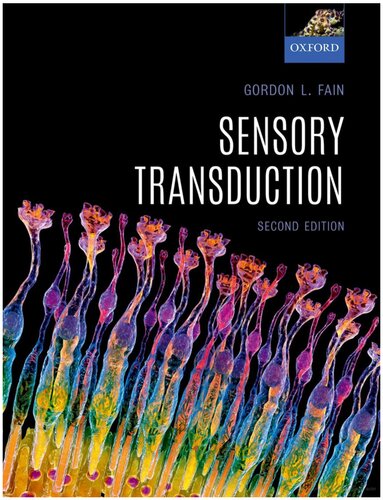
Product details:
ISBN-10 : 0198835027
ISBN-13 : 9780198835028
Author: Gordon L. Fain
How are sights and sounds and smells converted into electrical signals in a form that can be interpreted by the nervous system? Although this process, called sensory transduction, began to be understood only relatively recently, so much progress has been made that it is now possible to say at least in outline (but in most cases in remarkable detail) how transduction occurs for all of the major sense organs of the body. Since the first edition was published in 2003, many new experiments have radically changed some of our previously-held views.This new edition fulfils the book’s original aims, both as an accessible textbook and a general introduction to the senses, by bringing the contents fully up to date with the new information acquired over the last 15 years. In so doing, it continues to provide a comprehensive survey of one of the greatest achievements of modern biology and neuroscience – the unravelling of the mechanism of sensation. Sensory Transduction is written for advanced undergraduates, graduate students, and researchers in neurophysiology and sensory neuroscience. It is also of relevance and use to a broader audience of neuro, evolutionary, integrative, and comparative biologists.
Sensory Transduction 2nd table of contents:
Chapter 1: The senses
Early studies of the anatomy of the sense organs
The physiology of sensation
Cracking the problem: molecular physiology
The revolution of molecular biology
Piezo proteins: channels mediating touch
The code deciphered: sensory transduction
Chapter 2: Mechanisms of sensation
Sensory membrane
Organization of membrane and sensory protein
Membrane renewal
External specializations
Detection of the stimulus
Primary and secondary receptor cells
Sensitivity of transduction
Noise
Sex pheromone detection in the male moth
Summary
Chapter 3: Channels and electrical signals
Structure and function of ion channels
Structure of the pore
Gating
Ionotropic receptor molecules
Membrane potentials
The Nernst equation
Ion homeostasis
The Goldman voltage equation
Driving force and voltage change
The voltage response of hair cells
The technique of voltage clamping
Voltage clamp of the hair cell
Voltage-clamped response of the hair cell
Ion selectivity
Summary
Chapter 4: Metabotropic signal transduction
G-protein-coupled receptors
Heterotrimeric G proteins
Effector molecules
Second messengers
Measuring cell calcium
Channels gated by second messengers
Mechanism of gating by cyclic nucleotides
A metabotropic sensory receptor
Summary
Chapter 5: Mechanoreceptors and touch
Mechanoreception in Paramecium
Transduction of touch in the round worm C. elegans
Crayfish stretch receptor
Insect mechanoreceptors
Mechanoreceptors and touch in mammals
Hairy skin
Merkel cells
Summary
Chapter 6: Hearing and hair cells
Insect hearing: tympanal organs
Insect hearing: Johnston’s organ
Hair cells
Tip links
Hair cell transduction proteins
The channels
Gating and bundle stiffness
Adaptation of hair cells
Organs of the lateral line
The vestibular system
The cochlea
Endolymph and endocochlear potential
Outer hair cells and tuning
Electrical resonance
Summary
Chapter 7: Chemoreception and the sense of smell
Chemotaxis
Olfaction in insects
Insect receptor proteins
Coding of olfaction in insects
Olfaction in vertebrates: the primary olfactory epithelium
Olfactory receptor proteins
The mechanism of transduction
Desensitization and adaptation
Coding in the principal olfactory epithelium
The olfactory bulb
The accessory olfactory system and vomeronasal organ
Summary
Chapter 8: Taste
Gustation in insects
Mammals: taste buds and the tongue
Taste transduction: metabotropic receptors
Bitter
Sweet
Umami
Transduction cascade
Taste transduction: ionotropic detection
Salty
Sour
The coding of taste
Summary
Chapter 9: Photoreception
Photopigment activation
Phototransduction
The photoreceptors of arthropods
Transduction in arthropods
Photoreceptor channels in arthropods
The role of Ca 2+ in the regulation of gain and turnoff
Vertebrate rods and cones
Transduction in vertebrate photoreceptors
Ion channels of rods and cones
The photocurrent
Shutting down the light response
Light adaptation
Pigment renewal and the recovery of sensitivity after bright light
Intrinsically photosensitive retinal ganglion cells
Summary
Chapter 10: Extra sensory receptors
Thermoreception
Seeing in the dark: heat receptors as detectors of infrared
Electroreception
Tuberous receptors and electrolocation
Magnetoreception
Magnetoreception in migrating birds
People also search for Sensory Transduction 2nd:
signal transduction and sensory transduction
sensory transduction in taste receptors
signal transduction and targeted therapy impact factor
signal transduction and targeted therapy
signal transduction and targeted therapy abbreviation
Tags: Sensory Transduction, Gordon Fain, electrical signals, the nervous system
You may also like…
Travel - Europe - Travel
Business & Economics
Computers - Programming
Angular Development with Typescript 2nd Edition by Yakov Fain 1617295345 9781617295348
Engineering - Telecommunications
Principles of Mobile Communication 4th Edition Gordon L. Stüber
Computers - Programming
TypeScript Quickly 1st Edition by Yakov Fain, Anton Moiseev ISBN 9781617295942 1617295949
Biology and other natural sciences
Computers - Programming
TypeScript Quickly 1st Edition Yakov Fain Anton Moiseev 1638351430 9781638351436


